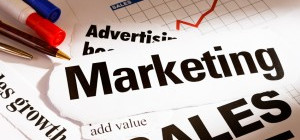 As the popularity of email communication continues to rise, marketers and managers forget to pay attention to one particular type of email: newsletters.
As the popularity of email communication continues to rise, marketers and managers forget to pay attention to one particular type of email: newsletters.
While newsletters are a great way to engage with customers, provide them with extra information, and boost conversions and sales, if not done right, they can make consumers unsubscribe from your website. Your newsletter reflects your business’s services. Hence, it is crucial that it stays true to your business values and offers value-added content.
Creating a newsletter is one of the most significant challenges that marketers face; however, this article will answer all your rising questions about making your newsletter interesting for your clients.
Value-added Content
A newsletter is like a miniature magazine for your business. The content that you provide should be more than the advertisement but less than your actual content on the website. Your newsletter acts as a bridge between the content that your business offers and your customers. For this reason, your newsletter should have value-added content. It should not just be promotional, but should provide valuable, educational content that makes your readers wait for your newsletter to arrive in their mailbox every time!
Consider adding news articles, visual images, tips and tricks, valuable ideas that they are likely to find interesting. Once you have made a loyal following, you can add promotional content regarding your products and services. You can see some email examples to get a deeper understanding of the content type that offers value to your audience.
Avoid Sending Emails from a General Email Address
Your newsletter can go in your recipient’s spam or junk. And we all know, spam emails never get checked. To avoid this, you should avoid sending emails from a bland email address such as Gmail, Yahoo! Or Hotmail. These platforms may be popular, but they do not provide a professional façade to your business’s newsletter.
Instead, consider using a PHP platform to send newsletters that also lets you personalize your email campaign and send bulk emails at a time. Additionally, marketers can also customize the header of their emails using a PHP email service which determines whether an email should go into spam or not.
Be Consistent
Customers like knowing what to expect from their favorite brands. When a visitor subscribes to your newsletter, send them a “guidance” email to explain your newsletter’s structure. As such, it is best if your newsletter follows a format – both internal and external.
The internal format includes having a consistent layout, theme, color palette that resonates with the business’s theme. Having recognizable features such as content sections, image alignments, and headers can be helpful for readers to differentiate between content. And external features involve having a specific time of the day to deliver emails, so your readers know what to expect from your newsletter and which page to search on for a particular type of content section.
It is advisable to create a regular schedule for your emails and let your recipients know about it. A consistent plan can help boost engagement and click-through rates.
Use Engaging Subject Lines
The subject line of your email is the next most important thing to consider after it lands in your recipient’s mailbox. The subject line should be captivating enough for readers to make them open the email. Almost 47% of people open emails based on their subject line alone, while emails with a personalized subject line have an available rate of 22%.
Some general practices of writing good email subject lines can be:
Try alliterations. These are a fun way to break the monotony of emails in your recipient’s mailbox. For example, 5 fast fixes for customer queries or 7 swift solutions for security issues.
Adopt a style your audience would like. The key to writing an engaging subject line is to know your audience well. Know what works well for them. If your target audience is primarily corporate workers, having a short, formal subject line would be enough. If your target audience is the youth, using emojis, slang and CAPS will catch their attention. Matching your audience’s likes and dislikes and tailoring your strategies accordingly can boost your click-through rates and increase email engagement.
Introduce Different Newsletter Formats For Different Subscribers. This is a relatively new and unique concept for marketers and email campaign managers. Suppose your email subscriber list has different types of subscribers on the list: while a business official may prefer to read a short piece of content, a manager on your list may be looking for more in-depth content.
Organizing your newsletter in different formats will ensure that you can cater to the distinct needs of diverse people in your list without having to create different newsletters for them.
Wrapping Up
If done right, email newsletters can be one of the most effective marketing tools in your arsenal. Engaging with subscribers, providing wholesome content, and delivering high-quality design can build your brand’s perception and leave a lasting impression on your recipients.







